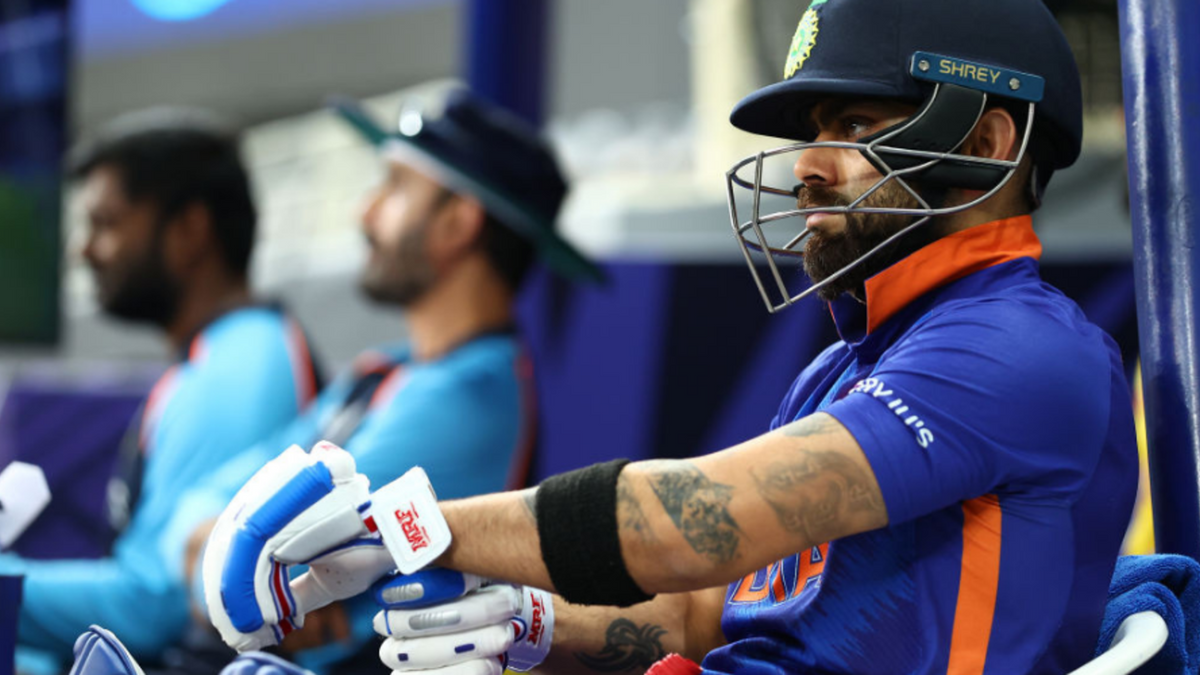
With a change in set-up now in place, Divy Tripathi asks, is Virat Kohli’s place safe as a T20I batter, and should it be?
Sign up to bet365 to be entered into a draw for the chance to win a Wisden Hoodie, terms and conditions apply, more information here. 18+ begambleaware.org
There were emotional good-byes and unfulfilled promises, but these already feel like a thing of the past. The shocking Super 12s exit from a competition in which many tipped them to go all the way, means that India need to reload and fix all that is amiss within their setup. One of the priorities for the new regime is to ensure that India’s immense batting talent doesn’t go to waste yet again in Australia.
Rohit Sharma has taken over the reins of the India T20 side. But while the Mumbai Indians skipper is a world-class player and a vaunted captain, his numbers show that he takes some time to get going in T20I format. But trust has been placed in Rohit for several reasons.
Firstly, he is an excellent captain – having won five IPL trophies, an Asia Cup, and a Nidahas tri-series. Secondly, even if there has been a blip in his recent form he is still a very good batter, especially in tense situations. He has a healthy strike-rate of 139.61, and is the second-highest six-hitter in the T20I format. He also looked in very good touch when he was back at the top in the last three Super 12 encounters that India played.
On the other side of the spectrum is the outgoing India skipper, Virat Kohli. He isn’t a part of the New Zealand T20I squad, but will in all probability continue to remain a part of the India T20 setup.
But should India continue to have both Rohit and Kohli at the top in their batting line-up? Or would this be following an approach which didn’t work in this T20 World Cup?
It is true that Kohli wasn’t in best of form going into the T20 World Cup. His strike-rates over the last two IPLs stood around 120, and this season he averaged merely 28.92. But his recent T20I form was excellent, and he has regularly been a player to raise his game for India. In the England T20I series earlier this year, he made three unbeaten scores above 70, whit his strike-rate 147.13. In the series before that, against Australia, he made a 61-ball 85 and a 24-ball 40.
But there are some riders to these successful outings. Firstly, some of the attacks against whom he scored these runs weren’t the strongest. Secondly, some of these runs came when Kohli came in early, or chose to open the batting. Thus he was able to start off slow, and then compensate in the later overs. This is a successful template in the T20 format, and there’s nothing wrong with what Kohli did here.
However, the same didn’t seem to click when India took on Pakistan in the T20 World Cup. Coming into the tournament with little form, Kohli stayed at the crease for the majority of innings but failed to up the batting rate.
But as much as you can focus on one or two players’ form, the issue is actually having to fit two players with similar styles into the same XI, resulting in their muddle-headed approach prior to and during the T20 World Cup. After suggesting that he’d regularly open for India, Kohli backtracked. This might’ve been partly inspired by the fact both Rohit and Kohli are slow-starters in T20 cricket. Given India’s huge array of batting talents and Rohit’s consistency, it might be they only need one of him or Kohli. Presently, India are looking to re-build under Rohit, and as stated above, he will continue to remain a crucial member in this line-up. That logic leaves Kohli in danger.
At the same time, Kohli is only 33. Despite his recent dip, he is still a valuable player for the India team. He has shown that when he gets set in, he can be a dangerous prospect. Plus, he’s Virat Kohli. If he shows form in subsequent internationals and the IPL, he remains a must-pick.
So how do India solve this conundrum of playing both Rohit and Kohli, without necessarily repeating the results of this year?
One way to solve this issue would be to understand that India has to rely on Kohli and not vice-versa. India should look to use him much in the way Australia have used Steve Smith (T20 strike-rate of 125.41, Powerplay strike-rate 119.52). One of the greatest batters of the modern era is used as a floater in the Australian T20 setup – he usually bats at four, but is moved up in case of an early wicket against a strong bowling attack, or down to let others in, when quick runs are needed. This is not a fixed template, given that Smith can always come in earlier if he is in a good nick. In the T20 World Cup, Smith batted only four times, twice achieving and twice failing to hold the innings the innings together at Nos.3 and 4 after early setbacks.
This is an option that might work quite well for India, given they have the likes of Rishabh Pant, Suryakumar Yadav, and Ishan Kishan, who can finish the innings well or kick on after a strong start. Kohli must not be the main man, but a player who plays a role. If there is clarity around his role, even Kohli can play with freedom and flourish.








